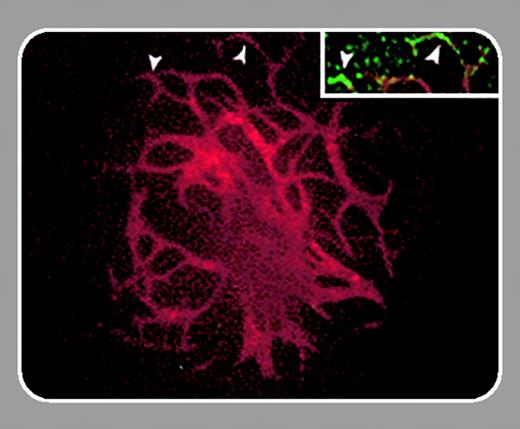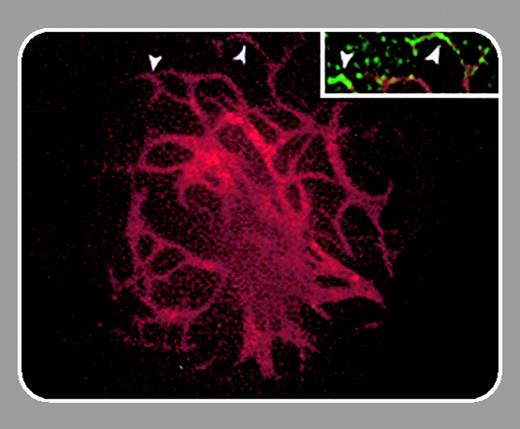The endothelial cells that line blood vessels are remarkable in their ability to modulate growth and survival under very different physiologic/pathologic situations.1 They are exquisitely responsive to growth stimuli, such as those provided by pregnancy, wound healing, and tumor cells. However, most of the time mature endothelial cells that line vessels cycle extremely slowly. In this quiescent state they are also highly resistant to cell death via apoptosis, but how this resistance is achieved has not been clear. Now Spagnuolo and colleagues (page 3005) have shown that Gas1 (growth arrest–specific gene-1) is a critical mediator of endothelial resistance to apoptosis. Gas1 influences proliferation in other cell types, but its role in endothelial homeostasis was not known. Moreover, Spagnuolo and colleagues have placed Gas1 in an endothelial survival pathway downstream of vascular endothelial growth factor (VEGF), vascular endothelial (VE)–cadherin, and phosphatidylinositol 3 (PI3) kinase. Thus, Gas1 is identified as an important new player in the maintenance of vessels, and it may be an appropriate target for new therapies.FIG1
This group previously showed that VE-cadherin, an endothelial cell mediator of cell-cell interactions, is required for contact inhibition of cell growth and resistance to apoptosis.2,3 In this study they use this as an entry point to search for genes regulated by VE-cadherin expression using a microarray strategy, and they identify Gas1 in this screen. To confirm that Gas1 is downstream of VE-cadherin and further study its effects, they make use of mouse endothelial cells with a targeted null mutation for VE-cadherin. As predicted, Gas1 expression is down-regulated in VE-cadherin null endothelial cells. They then show that Gas1 specifically affects resistance to apoptosis and does not modulate growth rate per se, which sets its role in endothelial cells apart from its role in other cell types. Next, they place VEGF and PI3 kinase upstream of Gas1 expression, which strongly supports a model in which both VEGF and VE-cadherin signaling feeds through PI3 kinase to up-regulate Gas1 expression. Finally, they use short interfering RNA (siRNA) in cultured cells and in allantoises to directly test the hypothesis that Gas1 is an important antiapoptosis mediator. The allantois is an embryonic structure rich in vessels that can be cultured in vitro and support vessel formation in a VEGF-dependent way.4 These important experiments show that reduction of Gas1 expression abrogates endothelial cell protection from apoptosis both in cultured cells and in vessels ex vivo.
In the larger picture, it is clear that Gas1-independent pathways also influence resistance to apoptosis. However, pathways such as that used by antiapoptotic protein (IAP) family members do not work upon cell cycle arrest, whereas Gas1 is up-regulated at this point. Thus, Gas1-mediated resistance may fill a critical void in the endothelial maintenance mode. Important questions remain, including how Gas1 mediates its antiapoptotic effect. Moreover, the relationship of Gas1 to the well-characterized PI3 kinase/Akt survival signal remains to be elucidated. However, this study firmly places Gas1 in the important regulatory cascade that leads to resistance to cell death, a critical property of quiescent endothelial cells in vessels.



